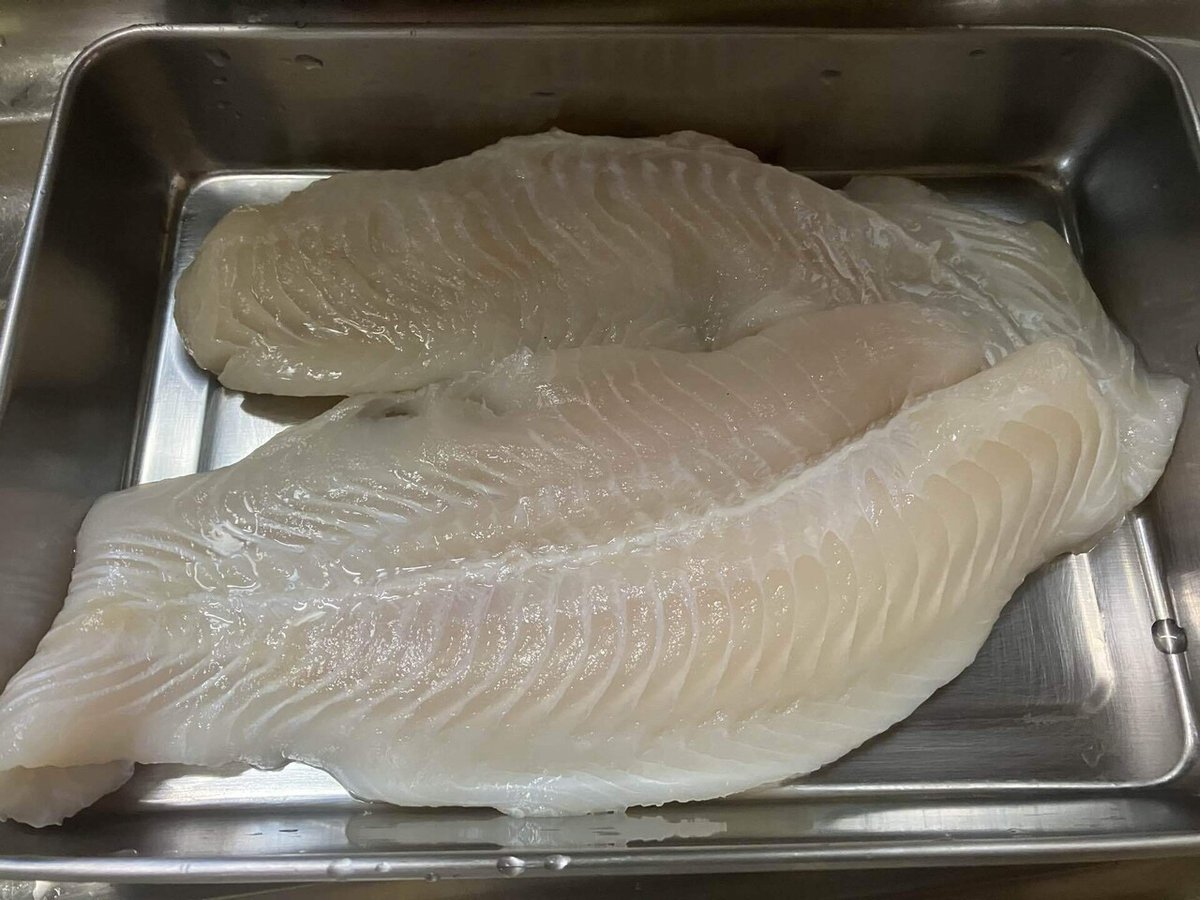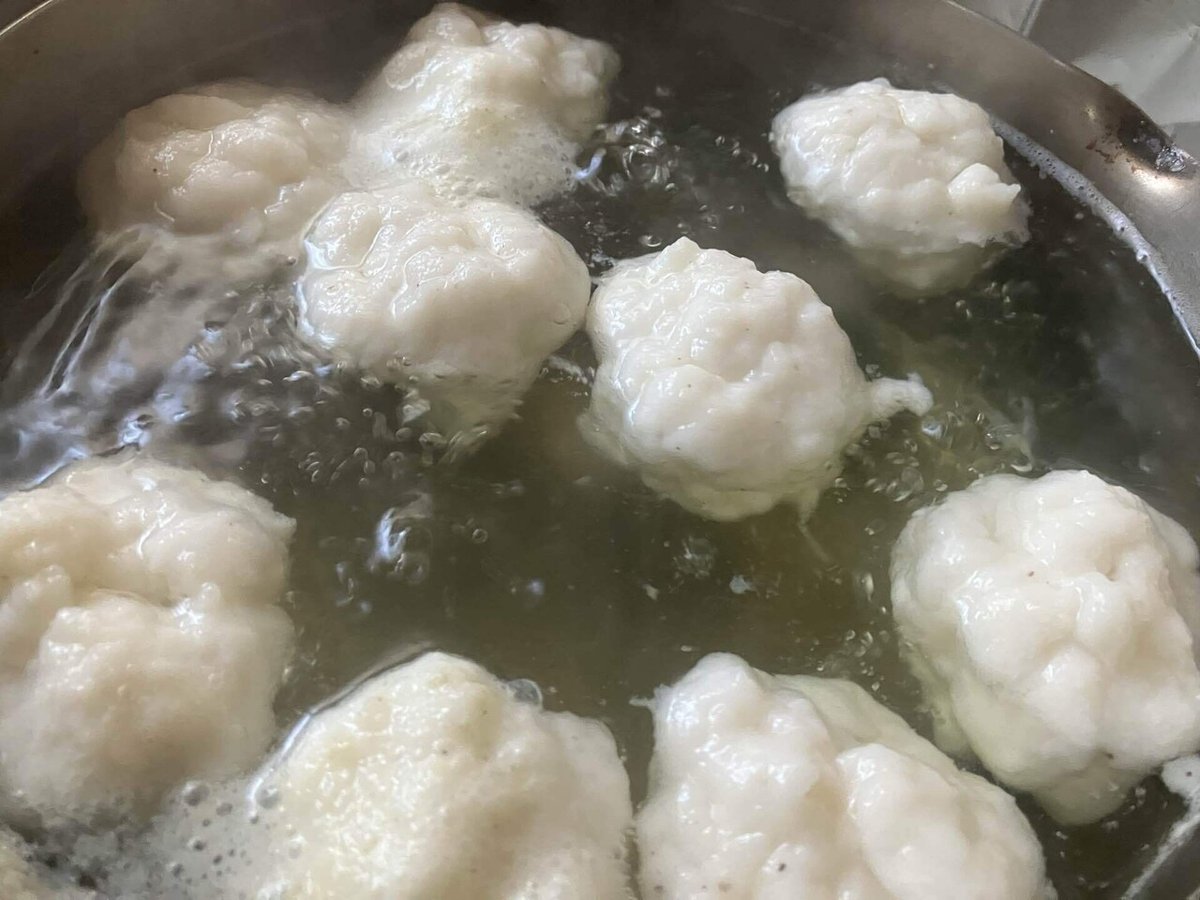
香りのハーモニーを楽しむ芹菜魚丸湯麺(あえて乾麺使用。グルテンフリー対応可) Celery fish ball noodles soup(purposely dried noodles used, gluten-free options available)
中華乾麺千本ノック 1000 fungos for Chinese dried noodles
世界的に見れば、スパゲッティや米麺など乾燥麺は市民権を得ているのに、日本で食べられている中国麺はほとんどが生タイプだ。インスタントヌードルは日本の発明だけど、スナック扱いされていて、正式な食事の席では喜ばれない。だから、あえて中華乾麺頑張れというお話し。安いし冷蔵の電気代かからないからね。
このスープはベトナムの米麺のフォーとも抜群の相性なので、グルテンフリーが必要な人は、中華乾麺をフォーに換えると良い。
Globally, dried noodles such as spaghetti and rice noodles have gained popularity, but most Chinese noodles eaten in Japan are fresh. Instant noodles are a Japanese invention, but they are treated as snacks and are not welcomed at formal dinner tables. That's why I'm urging Chinese dried noodles to do their best. They're cheap and don't require electricity for refrigeration.
This soup also pairs perfectly with Vietnamese rice noodle pho, so if you need a gluten-free option, try substituting the Chinese dried noodles for pho noodle.
ストーリー
Recipe trivia
「魚丸湯(ユーワンタン)」は、台湾の夜市で人気の白身魚のつくねスープ。
よく日本料理はあっさりしているというけど、それは高級割烹だけの話。特に関東のストリートフードに限れば、あっさりした料理はほとんど見つからない。ラーメンはこれでもかというほどこってりしている。たまに究極の塩ラーメンと銘打った店に入ってはみるけど、あっさりどころか、凝りすぎの複雑系スープだったりする。蕎麦やうどんの汁は砂糖たっぷりで甘ったるい。さらっとシンプルな「お茶漬け(炊いたご飯に、お茶やスープを注いだだけのさっぱりした米料理。お粥のように煮ない)」とか「魚のあら汁」とかを食べたければ、それなりのお金を払って、「ちゃんとした割烹」や「寿司屋」とか「小料理屋(居酒屋以上割烹未満の料理を出すお店)」にでも行くしかない。
実は、日本より台湾料理の方が、引き算で素朴な味付けのストリートフード店が多い。なんでも丼に詰め込もうとする日本のB級グルメ文化と、小ポーションで複数の料理を食べる台湾の夜市文化の違いもあるのかもしれない。僕の夜市の一番のお気に入りは、この魚丸湯だ。本当に上品な魚の味しかしない。白身魚のつみれは真っ白でふわふわ。噛み締めるたびに魚の味が広がる。そして凄いのがスープ(「味が薄い」とつぶやきながら、醤油を流し込んで食べている日本人が圧倒的に多いので、これには異論があるかもしれない)。蛇足な足し算の味が何にもない。潔いほどあっさりのスープなのだ。合わせる野菜もセロリだけ。セリ科のセロリは欧州料理のブーケガルニにも使われる香りの王様。魚の香りたっぷりの潮汁とセロリの香りのハーモニーが素晴らしい。ベトナムのフォーと並ぶ絶品スープだと僕は思っている。
スープだけで注文する人も多いけど、麺を入れて「魚丸湯麺」にしてくれる店もある。
"Yu Wonton" is a white fish meatball soup that is popular at night markets in Taiwan.
Japanese food is often said to be light, but that is only true at high-end Kappo restaurants. Especially in the Kanto area, it is difficult to find light food. Ramen is rich as much as it can be. Sometimes I go to a restaurant that advertises itself as the ultimate salt ramen, but far from being light, the soup is too complicated. The soup for soba and udon is full of sugar and sweet. If you want to eat a simple "ochazuke (a light rice dish made by simply pouring tea or soup over cooked rice. It is not cooked like porridge.)" or "fish soup", you have to pay a fair amount and go to a "proper Kappo restaurant", "sushi restaurant", or "ko-ryori-ya (a restaurant that serves food that is more than an izakaya but less than Kappo)".
In fact, there are more street food restaurants with minimal and simple seasonings in Taiwan than in Japan. There may also be a difference between the Japanese B-class gourmet culture that tries to cram everything into a bowl and the Taiwanese night market culture where you eat multiple dishes in small portions. My favorite dish at the night market is this fish ball soup. It really has a refined fishy taste. The white fish balls are pure white and fluffy. The fishy taste spreads with every bite. And the soup is amazing (though the vast majority of Japanese people murmur "it's too bland" and pour soy sauce over their soup before eating, so some people may disagree). There's no unnecessary added flavor. It's a clean, light soup. The only vegetable it's paired with is celery. Celery, a member of the parsley family, is the king of flavors and is also used in European cuisine as bouquet garni. The harmony between the fishy flavor of the broth and the celery flavor is wonderful. I think it's an excellent soup, on par with Vietnamese pho.
Many people order just the soup, but some places will add noodles to make it "fish ball soup noodles."
ここでは、僕のレシピで何度か使っているパンガシウス(パサ)を使った。日本にかなりの量が輸入されているのに、それと意識せずに日本人が沢山食べている魚だ。「フィレオフィッシュ」とか「のり弁(日本人の大好きな一番安いコンビニ弁当)」とかに入ってる奴だ。最近は普通のスーパーでも手に入る。懐に余裕があるなら、タラやヒラメ、カレイ、赤魚などの白身魚を使っても良い。実は、この魚、雑味が無くて非常に美味しい。ナマズの仲間だ。ただ、フィレでの輸入なので骨がない。そこで、煮干しを使って出汁をとった。骨のある魚を使うなら、その骨で出汁を取れば良い。
ちょうどプランターのセロリの最後の収穫があったので、それを使った。
以前にさつま揚げを紹介した記事ではフードプードプロセッサを使ったが、少ない量なら、最近の高性能モーターの入った小型ミキサーでも十分に用が足りるし、洗うのも楽なので、今回はそっちを使っている。
Here, I used pangasius (pasa), which I have used in several recipes. It is a fish that is imported to Japan in large quantities, but Japanese people eat a lot of it without realizing it. It is the fish that is included in "Filet-o-Fish" and "Nori-ben (the cheapest convenience store bento that Japanese people love)". These days, you can get it at regular supermarkets. If you have the money, you can use white fish such as cod, flounder, plaice, and red fish. In fact, this fish has no unpleasant taste and is very delicious. It is a member of the catfish family. However, it is imported as fillets and has no bones. Therefore, I used dried sardines to make the stock. If you use a fish with bones, you can make the stock using the bones. I used the last of the celery that I had harvested from my planter.
In the previous article introducing satsumaage, I used a food processor, but for small amounts, a small blender with a high-performance motor is sufficient and easy to clean, so I used that this time.
Ingredients:
材料:
中華乾麺
パンガシウス(他の白身魚でも良い)
セロリ
煮干(魚の骨があるなら、無くても良い)
昆布
片栗粉
陳皮(手に入る柑橘の皮でも良い)
魚醤
自然塩
胡椒
Chinese dried noodles
Pangasius (or any other fish with white meat)
Celery
Dried anchovies (optional if you have fish bones)
Konbu kelp
Potato starch
Dried tangerine peel (optional, you can use any citrus peel you can find)
Fish sauce
Sea salt
Pepper
procedure:
手順:
セロリを食べやすい大きさに切り分けておく。陳皮は細かく刻むか粉末状にしておく。
鍋に昆布と煮干(魚の骨がある場合は、湯通ししてから、煮干しの代わりに使う)とセロリの葉の一部を入れて、水を注ぎ、火にかける。
沸騰して来たら火を弱めて、15分程度煮る。ザルなどで濾して、スープだけを残す。
魚の白身を用意して、適当な大きさに切り分ける。
ミキサーに、下拵えした魚の切り身、片栗粉、自然塩、胡椒を入れ、水を少し注ぐ。
ミキサーを作動させ、ミンチを作る。回りにくい場合は、何度かに分けて、様子を見ながら、水を足しながら回す。ぽてっとしたミンチになれば良い。
前の工程で作ったスープを沸騰させ、中火で温度を保っておく。
魚のミンチを手で丸めて、沸騰したスープに落としていく。倍に膨れるので、入れすぎないように注意する。魚のボールが浮いて来たら、さらに一分ほど加熱して、それをザルなどに取り出す。ミンチがなくなるまで、これを繰り返す。
全てのミンチを茹で終わったら、残ったスープにセロリを入れて、セロリが透き通るまで煮る。そこに自然塩胡椒を入れ、好みの味に整える。最後にほんの少し、魚醤を垂らし、火を止める。
鍋にお湯を沸かして中華乾麺を茹で、茹で上がったら、ザルでお湯を切る。その際、茹で湯を丼に注ぎ温めておく。
温まった丼のお湯を捨て、丼の底に陳皮をに散らし、茹で上がった麺を入れる。
その上に、茹でておいた魚のボールをトッピングし、セロリと一緒にスープを注ぐ。
Cut the celery into bite-sized pieces. Finely chop or powder the dried tangerine peel.
Put the kelp, dried sardines (if there are fish bones, blanch them first and use them instead of dried sardines) and some celery leaves in a pot, pour in water and heat.
When it starts to boil, reduce the heat and simmer for about 15 minutes. Strain through a colander and leave only the soup.
Prepare the white part of the fish and cut it into bite-sized pieces.
Put the prepared fish fillets, potato starch, pepper and natural salt in a blender and add a little water.
Start the blender and make mincemeat. If it is difficult to blend, blend in several batches, adding water while watching the situation. It is fine if it becomes plump mincemeat.
Bring the soup made in the previous step to a boil and keep the temperature over medium heat.
Roll the minced fish into balls with your hands and drop them into the boiling soup. It will double in size, so be careful not to put in too much. When the fish balls float to the top, heat for another minute or so and remove them into a colander. Repeat this until you have used up all the minced meat.
Once all the minced meat has been boiled, add the celery to the remaining soup and boil until the celery is translucent. Add salt and pepper to taste. Finally, add a little fish sauce and turn off the heat.
Bring a pot of water to a boil and boil the Chinese dried noodles, then drain them in a colander when they are done. Pour the boiling water into a bowl to keep it warm.
Pour out the water from the warm bowl, sprinkle dried tangerine peels on the bottom of the bowl, and add the boiled noodles.
Top with the boiled fish balls and pour in the soup along with the celery.















Tips and tricks:
コツと応用のヒント:
純粋に海からの香りを楽しみたいので、肉のエキスや化学合成系の調味料は一切使わない。煮干は入れすぎるとくどさが出るので、一人前小さめの煮干2本で十分。雑味を出さないため、このスープに限っては、必ず、煮干の頭と内臓を取ること。
魚醤がない場合は薄口醤油で代替しても良い。ただ、調和がくずれてしまうので、このスープに関しては濃口醤油は絶対使うべきではないと思う。
魚に片栗粉を入れているのはふわふわ、歯切れ良くさせるため。魚の体積の2割くらいが妥当だと思う。入れすぎると餅のようになってしまう。魚の味だけで十分すぎるくらい美味しいので、他の材料は不要。
麺は、中華乾麺、米麺の他、素麺やきし麺も相性が良い。すいとん(小麦粉を水で練ったニョッキのような具)やはっと(すいとんとうどんの間のカテゴリー)を入れても、ご飯を入れてお茶漬け風に食べても美味しい。
爽やかさを演出するため、陳皮のみ使っているが、無くても良い。
このスープのバリエーションとして、レモングラスや青唐辛子、甘くない柑橘類のしぼり汁、コブミカンの葉などを足してもよい。その辺りが加わると、少しづつ、東南アジアの魚肉のバクソに近づいていく。
どうしても野菜を足したいなら、この調和を崩さないものにする。椎茸、キャベツ、玉葱のような系統の違う旨みや甘みの強いものは避け、セロリと同系統の香りのセリ科の人参、あるいは、強い味のない筍の水煮、木耳、もやしあたりにすると良いだろう。また、戻したワカメもよく調和する。
この調和を保ちながら豪華にしたいなら、エビのむき身や貝のむき身はありだ。
もちろん、スープだけでも立派な一品として完成している。
I want to enjoy the aroma of the sea purely, so I don't use any meat extracts or synthetic seasonings. If you add too much dried sardines, it becomes too heavy, so two small dried sardines are enough for one serving. To avoid unpleasant flavors, be sure to remove the heads and innards of the dried sardines for this soup.
If you don't have fish sauce, you can use light type soy sauce instead. However, I think you should never use dark type soy sauce for this soup, as it will ruin the harmony.
I put potato starch in the fish to make it fluffy and crisp. I think about 20% of the volume of the fish is appropriate. If you add too much, it will become like mochi. The fish flavor is more than enough, so no other ingredients are needed.
As for noodles, Chinese dried noodles, rice noodles, somen noodles, and kishi noodles also go well with this. It's delicious whether you add suiton (a gnocchi-like filling made from wheat flour kneaded with water) or hatto (a category between suiton and udon), or add rice and eat it like ochazuke.
Only dried tangerine peel is used to create a refreshing taste, but it is not necessary.
To vary this soup, you can add lemongrass, green chili peppers, unsweetened citrus juice, kaffir lime leaves, etc. Adding these ingredients will gradually bring it closer to the fish bakso of Southeast Asia.
If you really want to add vegetables, make sure they do not disrupt this harmony. Avoid shiitake mushrooms, cabbage, onions, and other vegetables with strong umami or sweetness, and use carrots, which are part of the parsley family and have the same aroma as celery, or boiled bamboo shoots, wood ear mushrooms, or bean sprouts, which do not have a strong flavor. Rehydrated wakame seaweed also blends well.
If you want to make it more luxurious while maintaining this harmony, you can add peeled shrimp or shellfish.
Of course, the soup alone is a fine dish.
Guide to where to get ingredients and equipment 材料と機材の入手先ガイド
※Amazonのアフェリエイトに参加しています。もしご購入の際はここからクリックしてご購入いただけると、コーヒー代の足しになるので、嬉しいです。ちなみに僕はコーヒー依存症です。
*I participate in Amazon affiliate programs. If you purchase this product by clicking here, it will help pay for my coffee, so I would be very happy. By the way, I am addicted to coffee.
この記事が参加している募集
この記事が気に入ったらサポートをしてみませんか?

